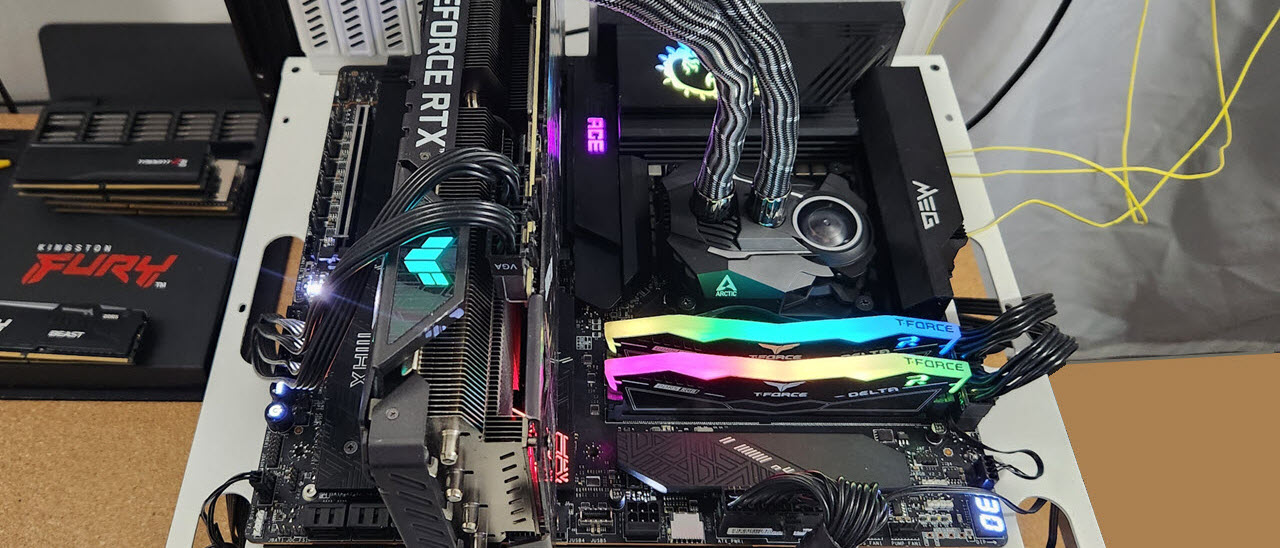Why you can trust Tom's Hardware
Our standard benchmarks and power tests are performed using the CPU’s stock frequencies (including any default boost/turbo), with all power-saving features enabled. We set optimized defaults in the BIOS and the memory by enabling the XMP profile. The Windows power scheme is set to Balanced (default) for this baseline testing, so the PC idles appropriately.
Synthetic Benchmarks
Synthetics provide a great way to determine how a board runs, as identical settings should produce similar performance results. Turbo boost wattage and advanced memory timings are places where motherboard makers can still optimize for either stability or performance, though, and those settings can impact some testing.
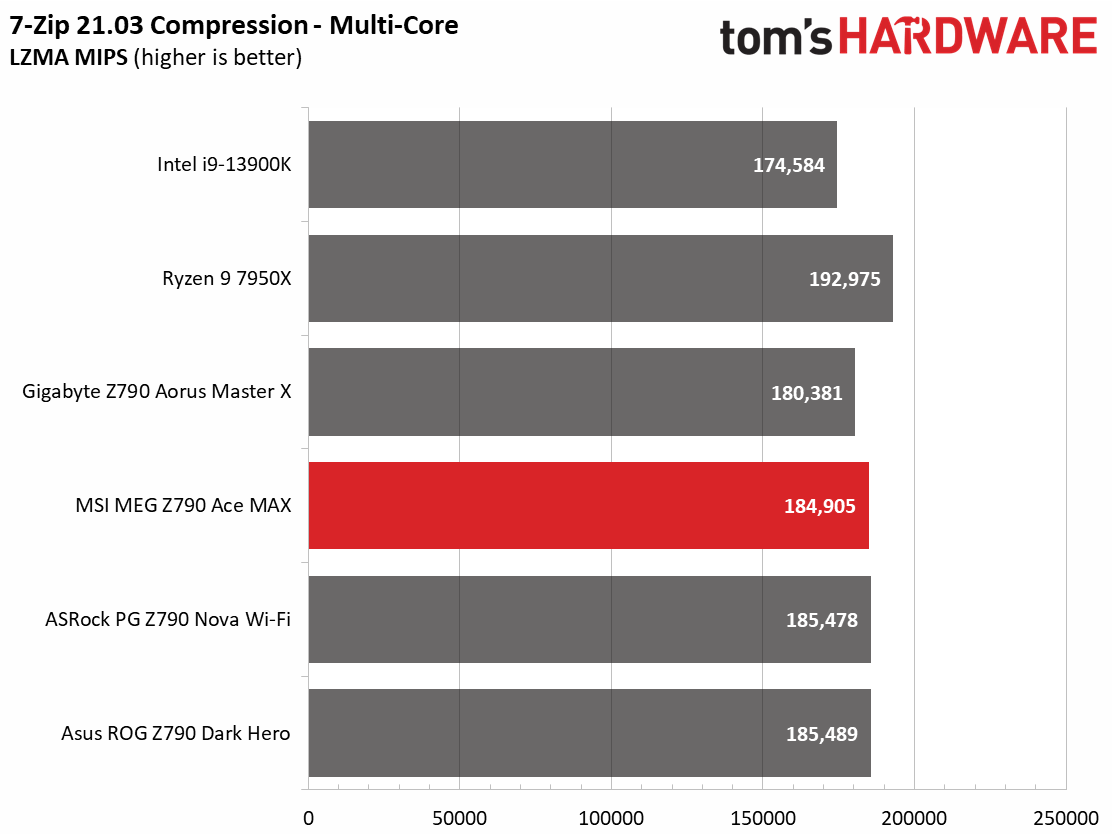
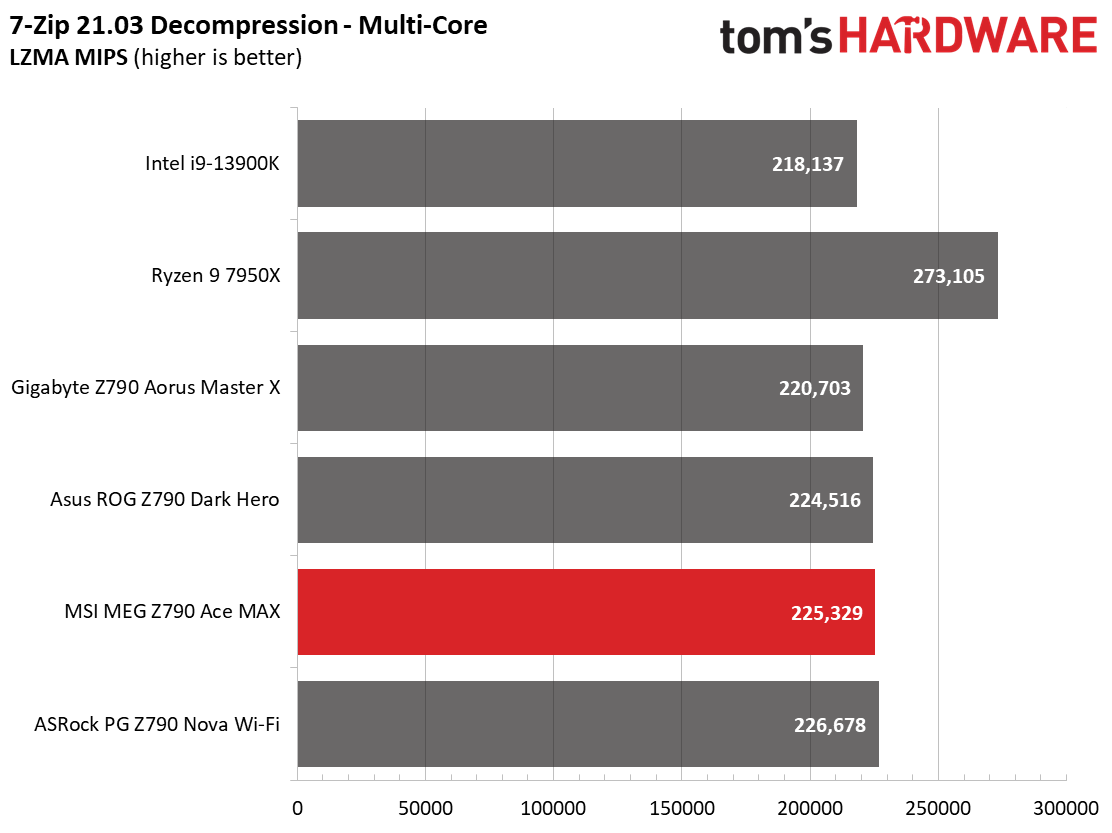
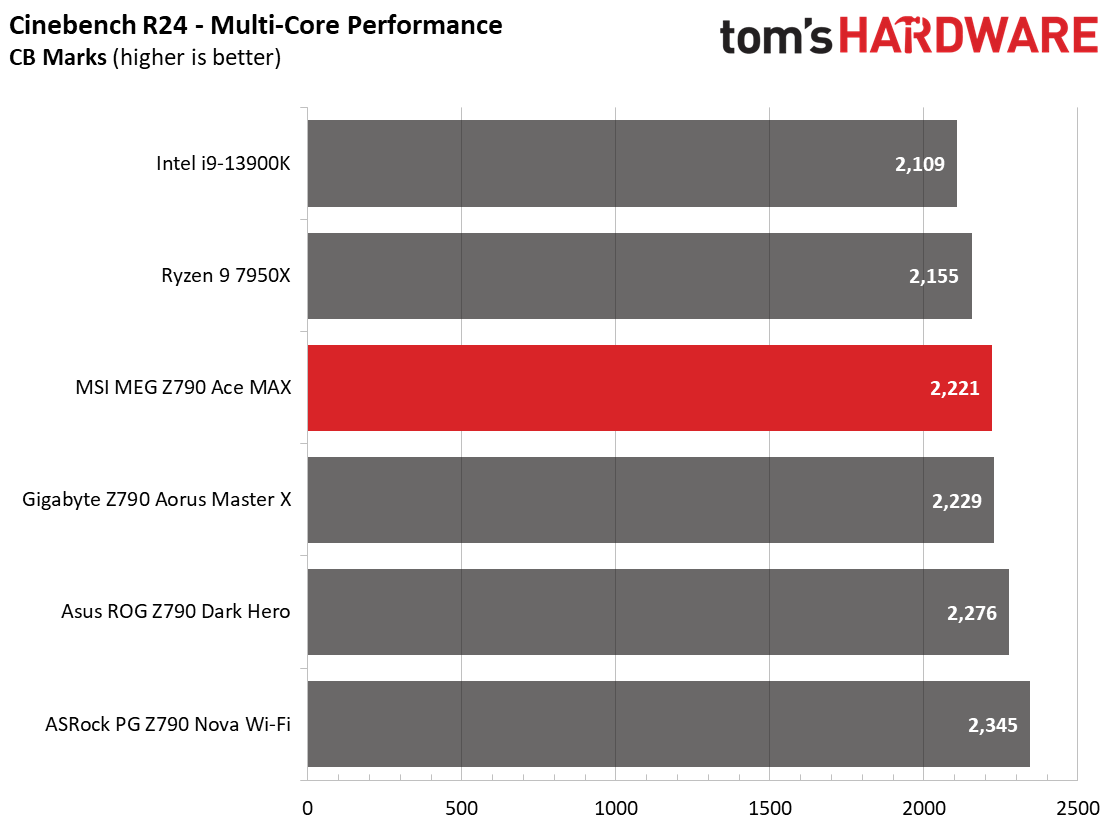
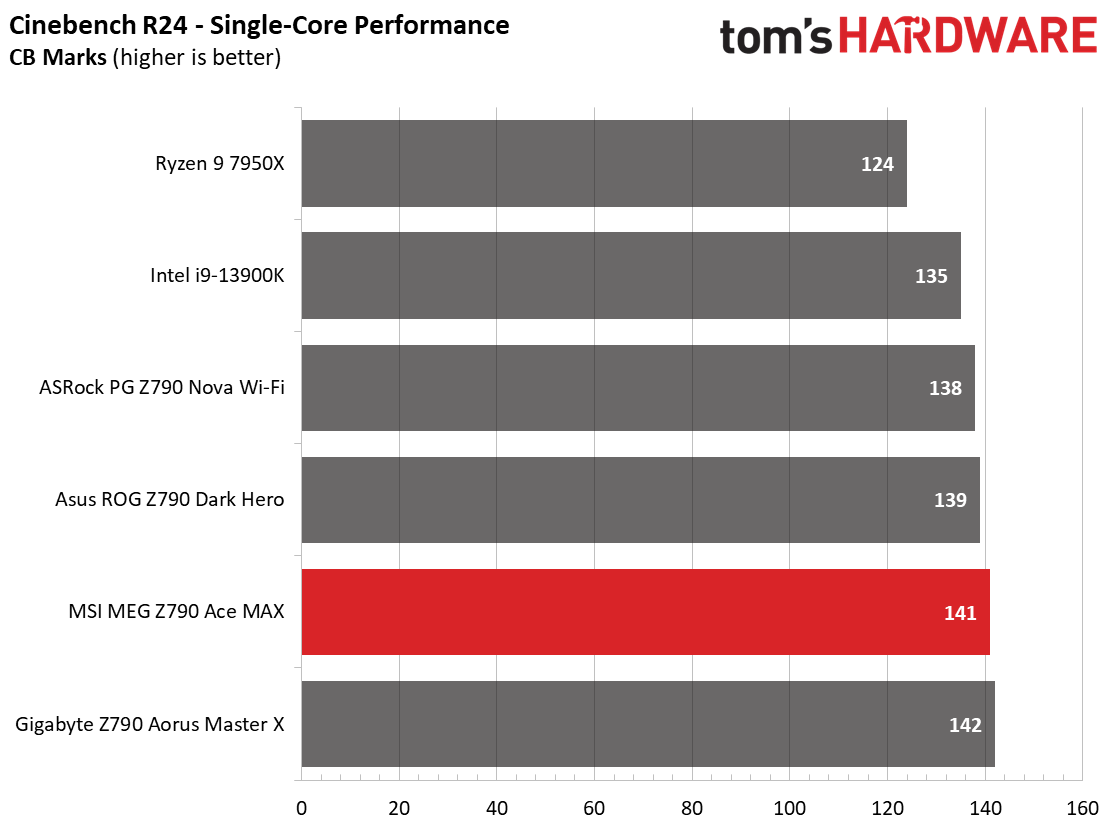

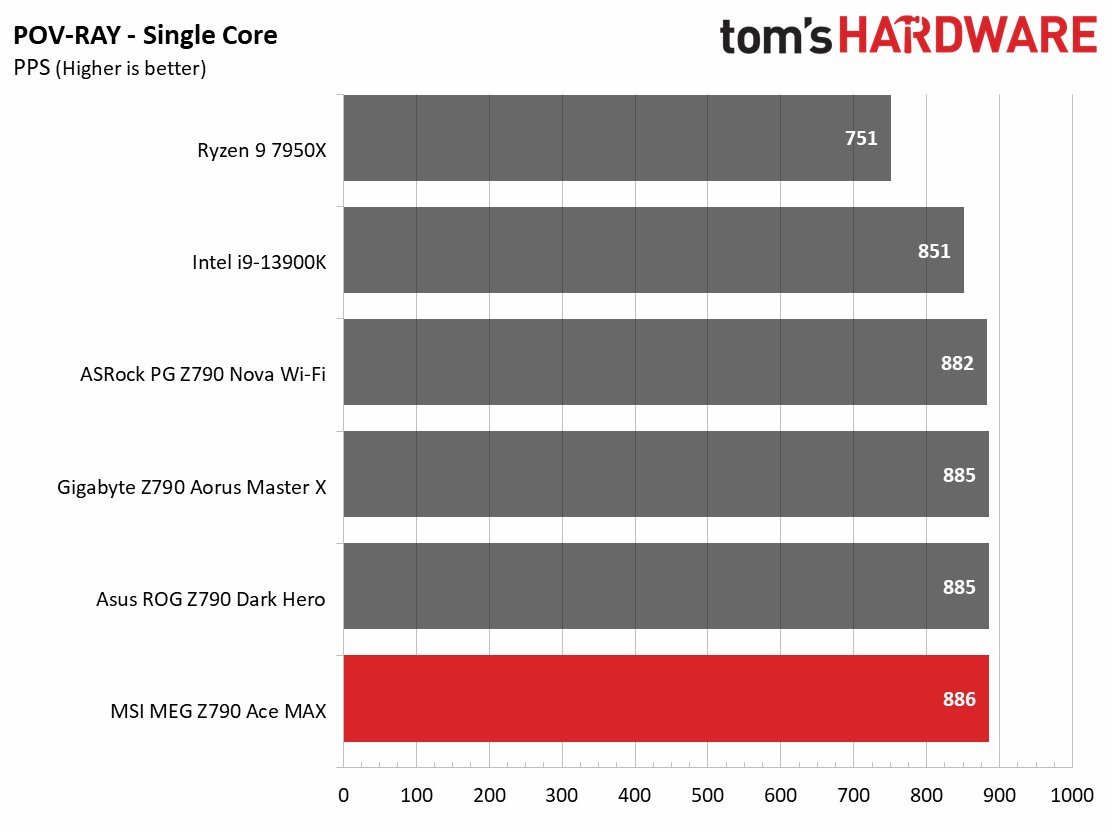
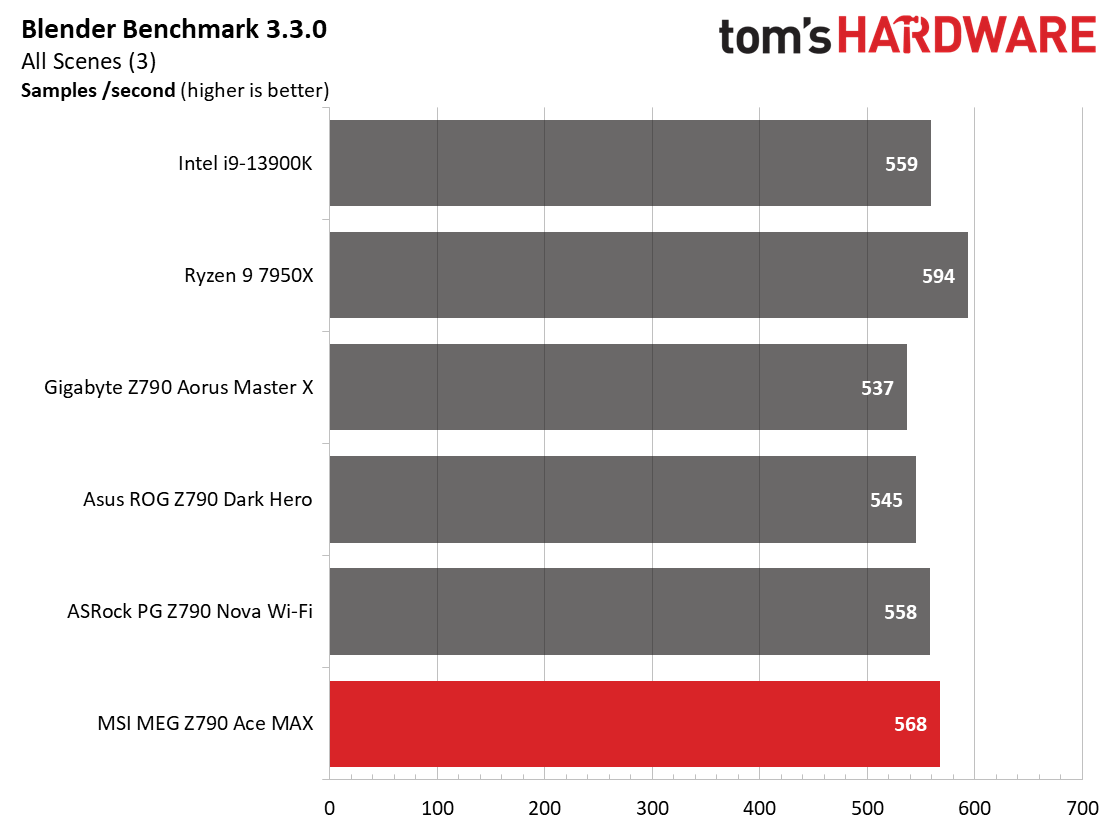


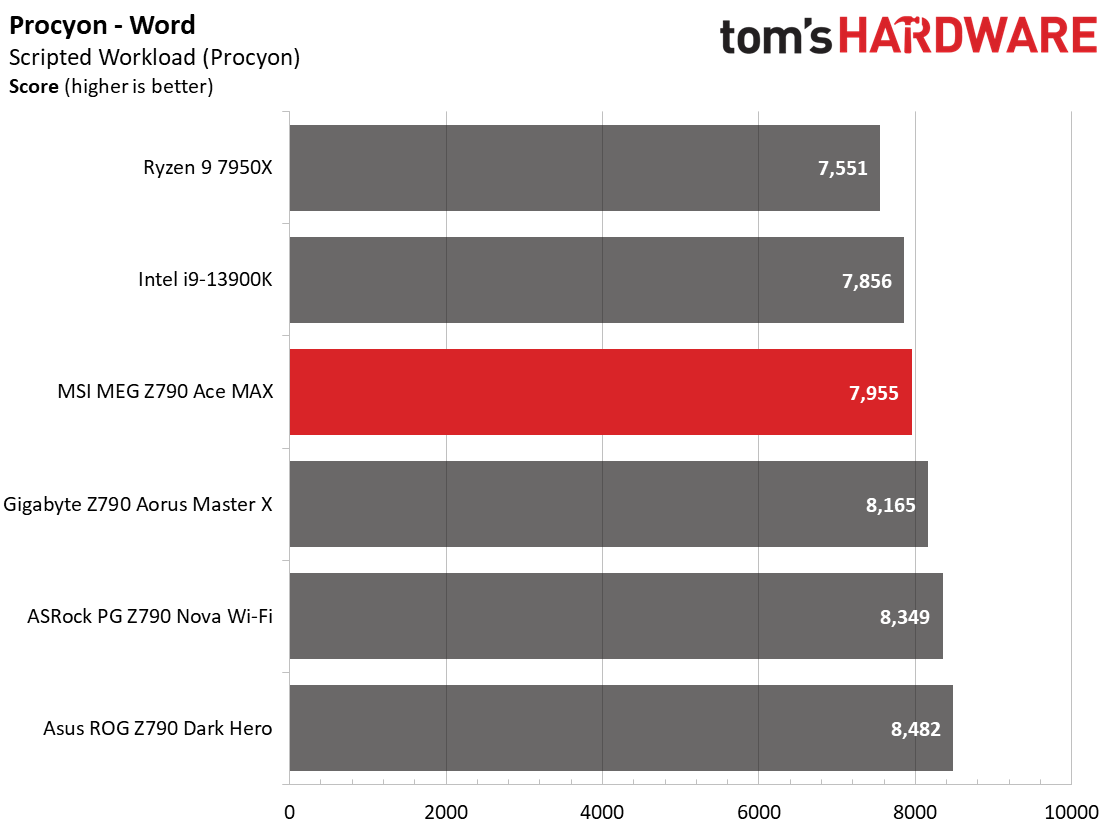
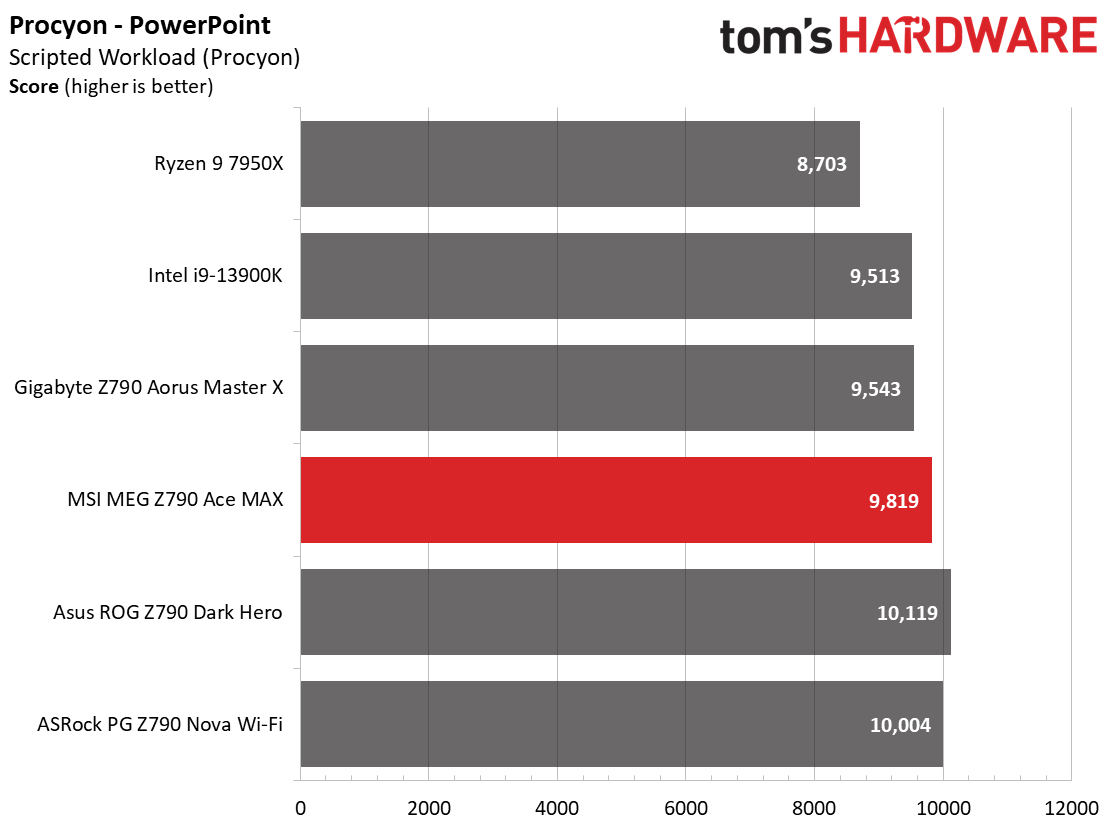
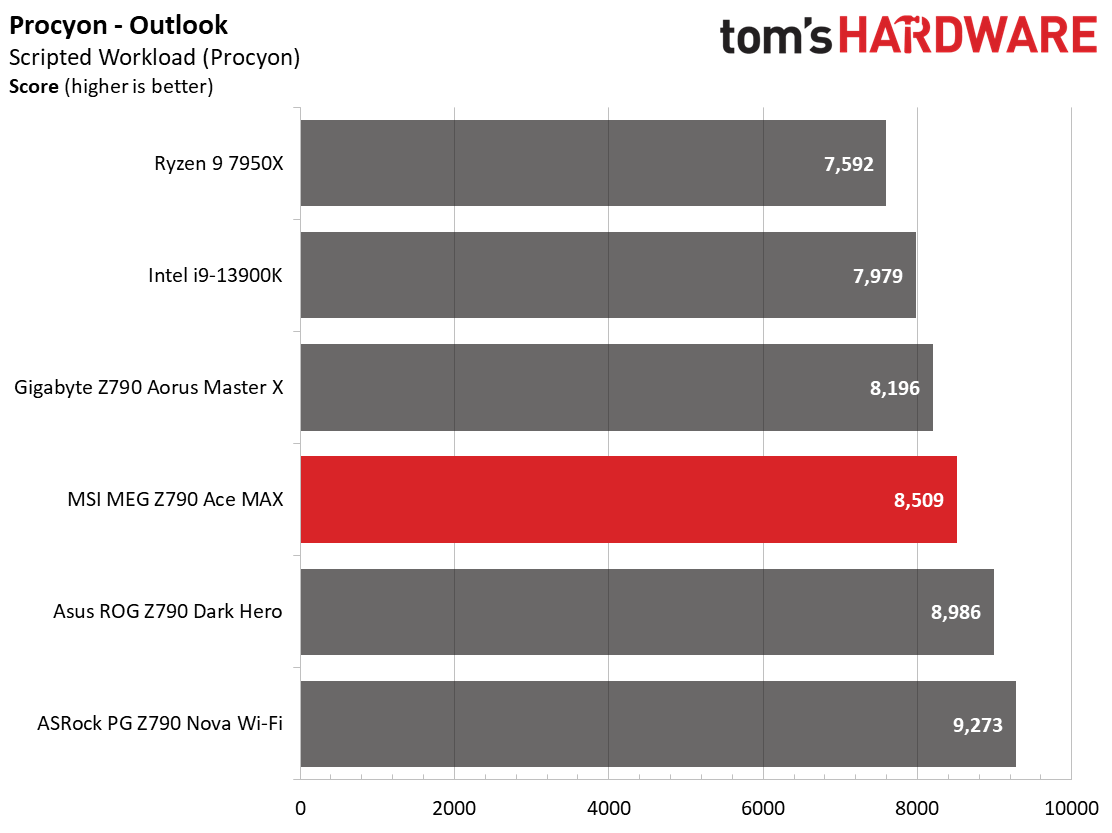
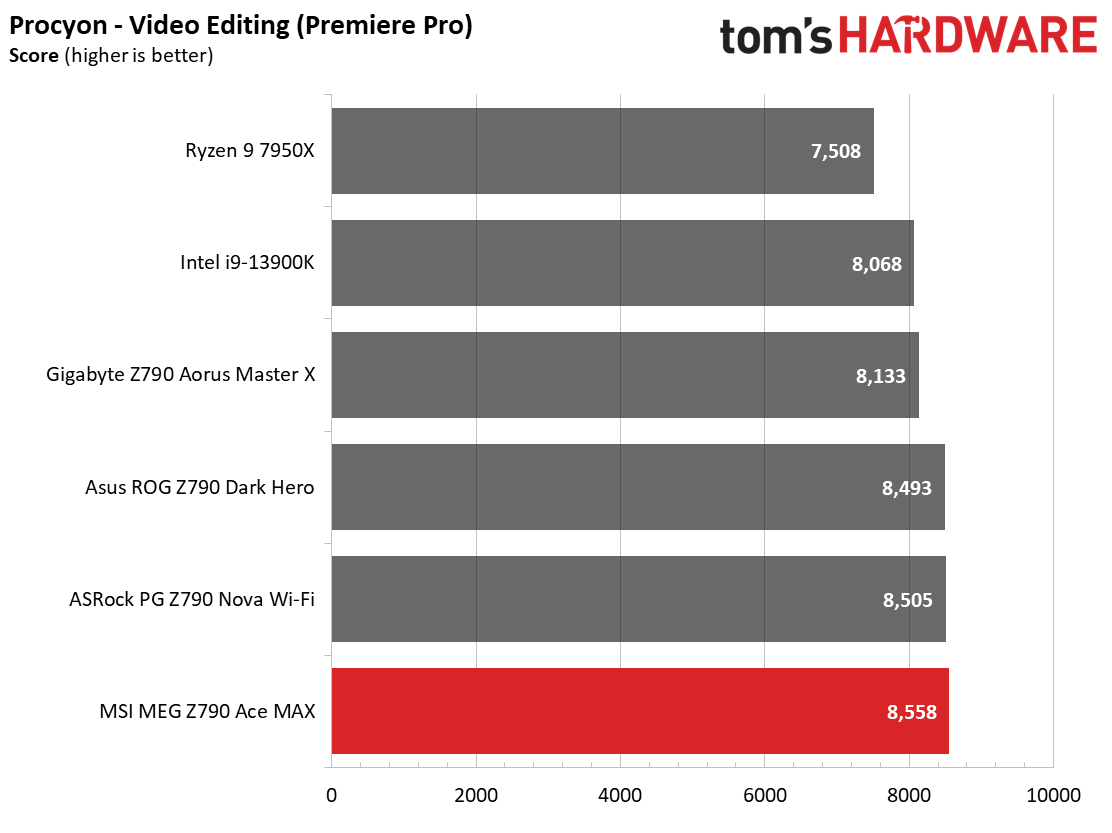
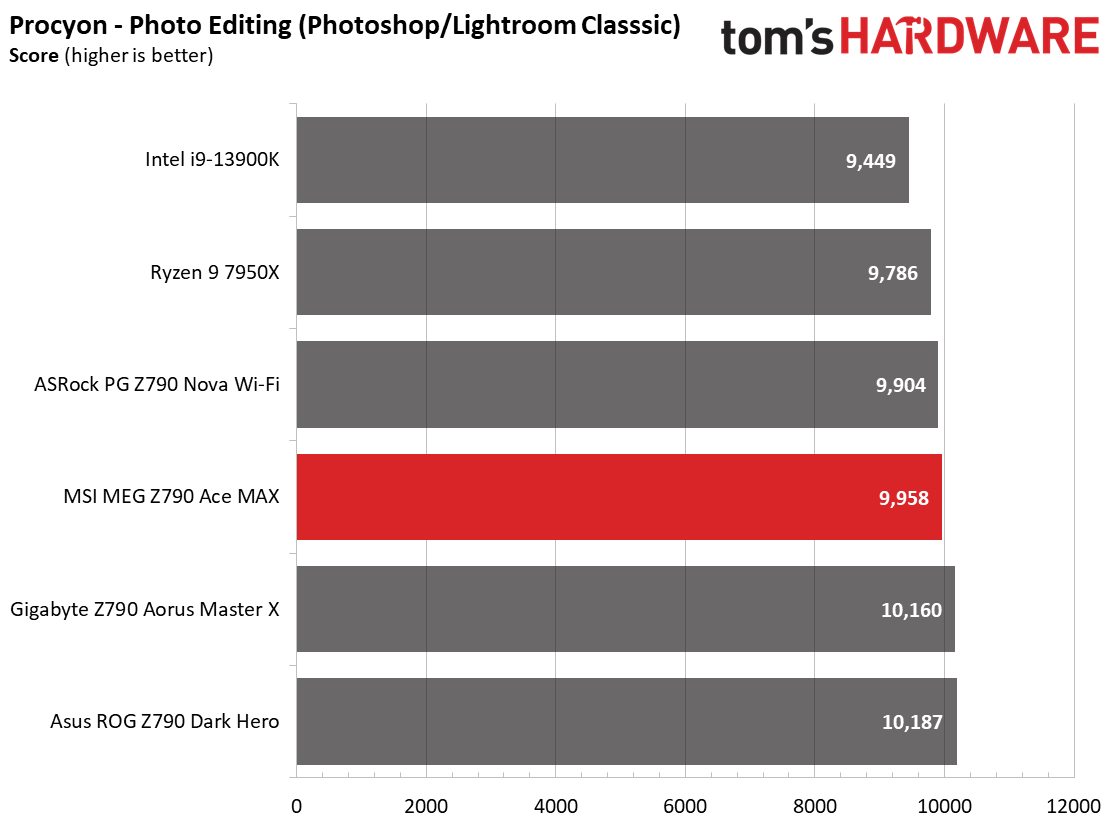
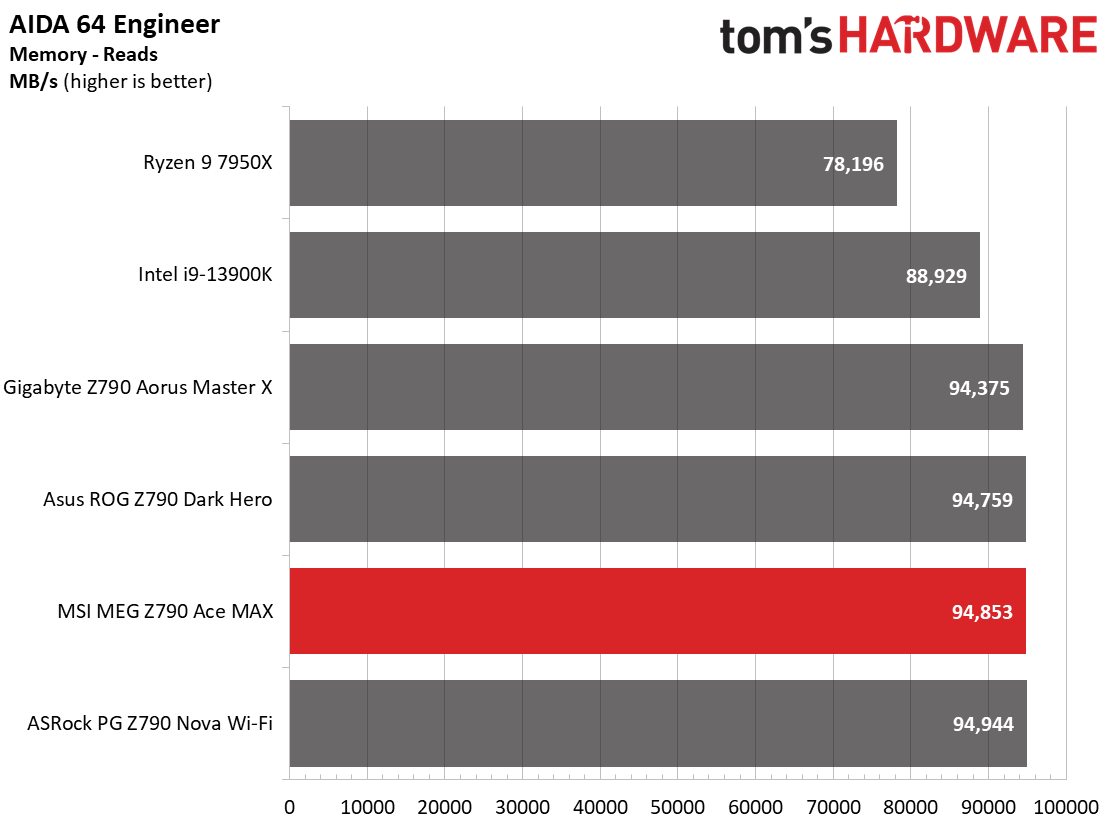
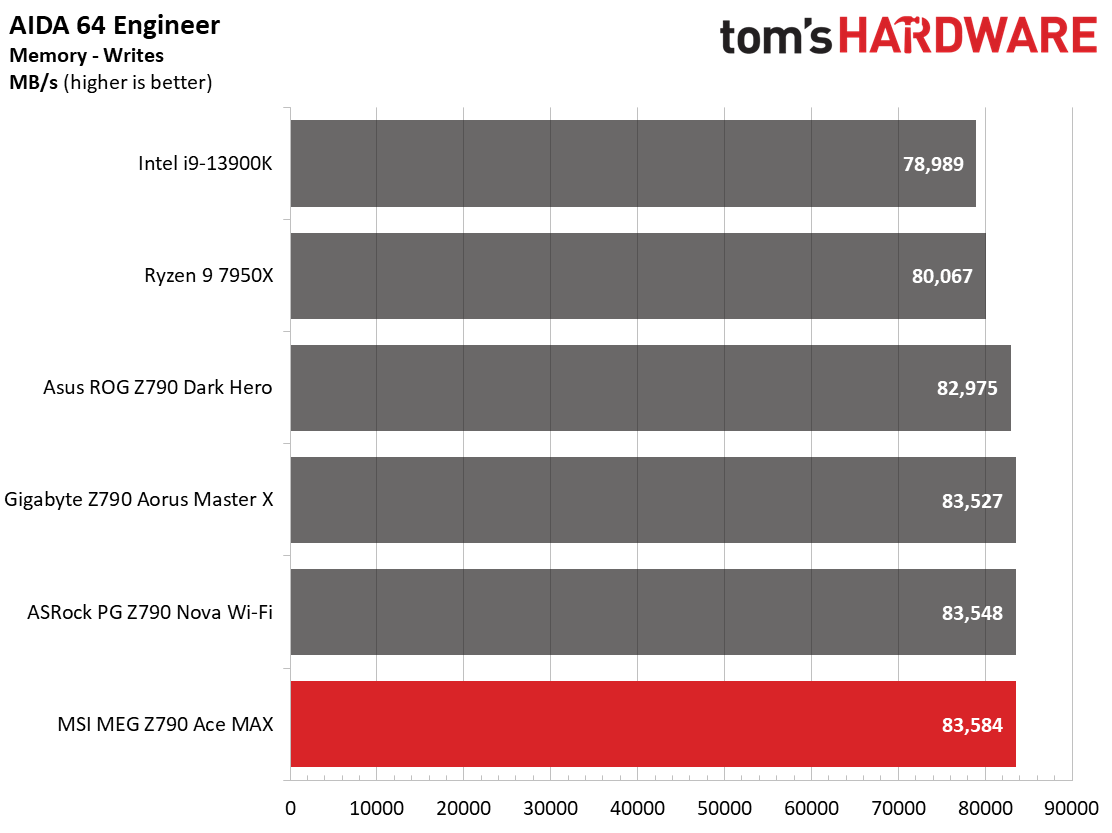

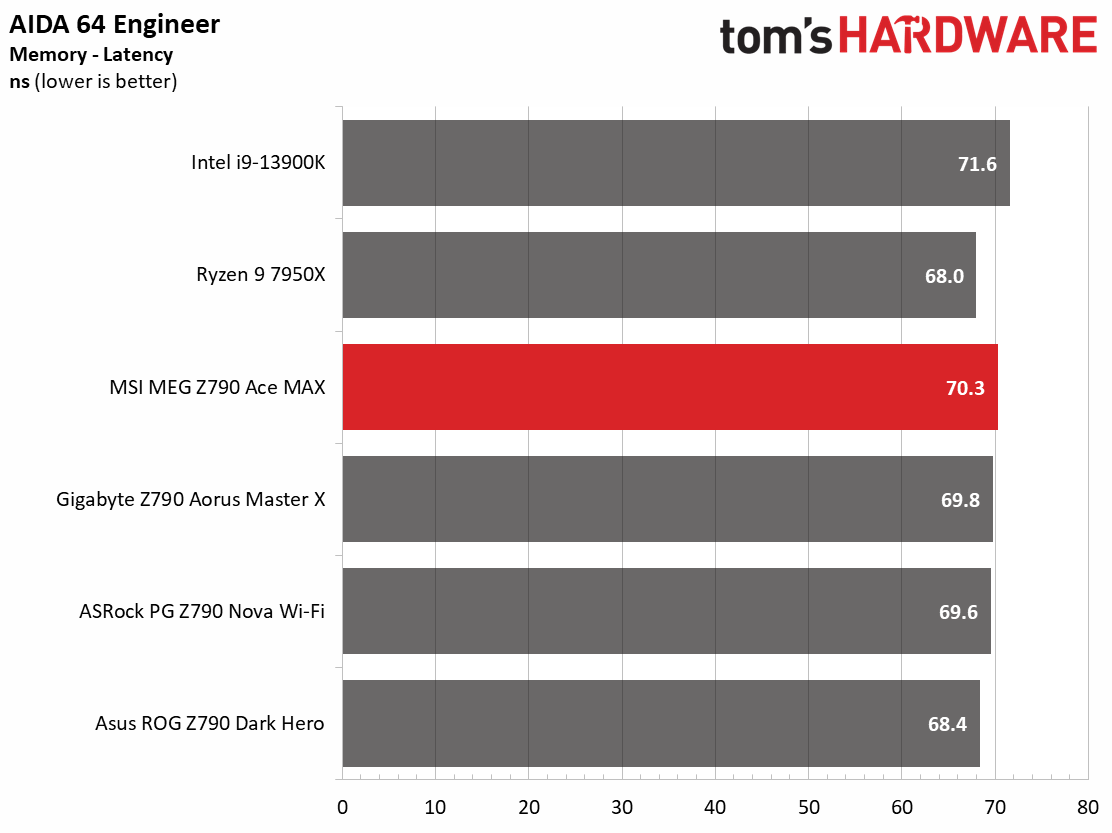
In our synthetic benchmarks, the 14900K/Ace MAX combo is one of the more performant boards due to our choice of cooler settings in the BIOS. Since we used the highest one (360mm AIO), this automatically adjusts the PL1/PL2 limits to 4096W. In other words, you’re limited by cooling in that scenario.
Timed Applications
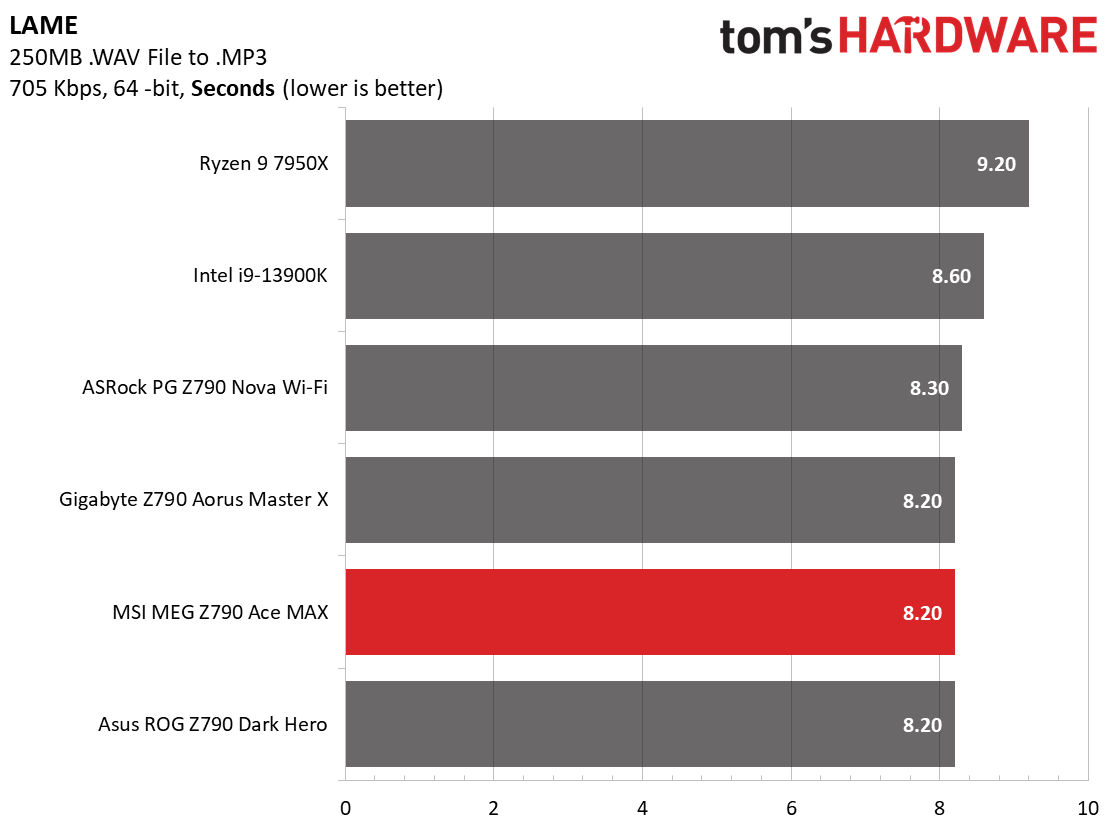

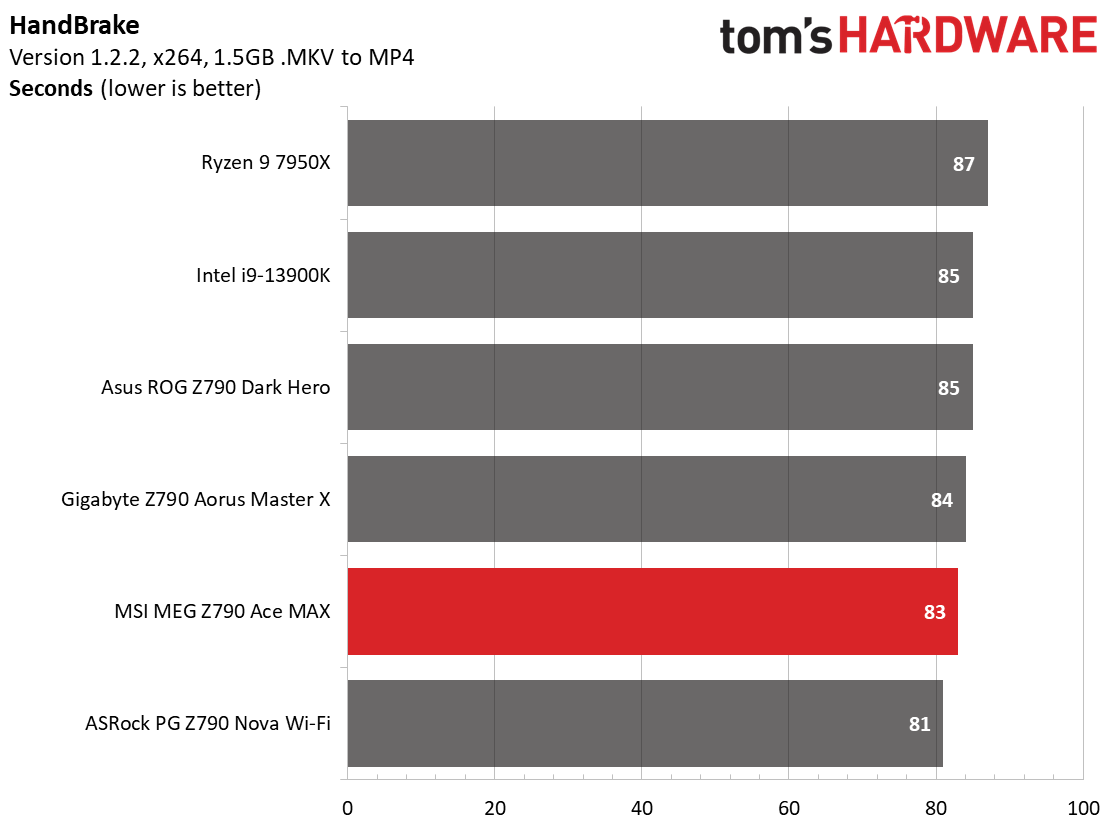
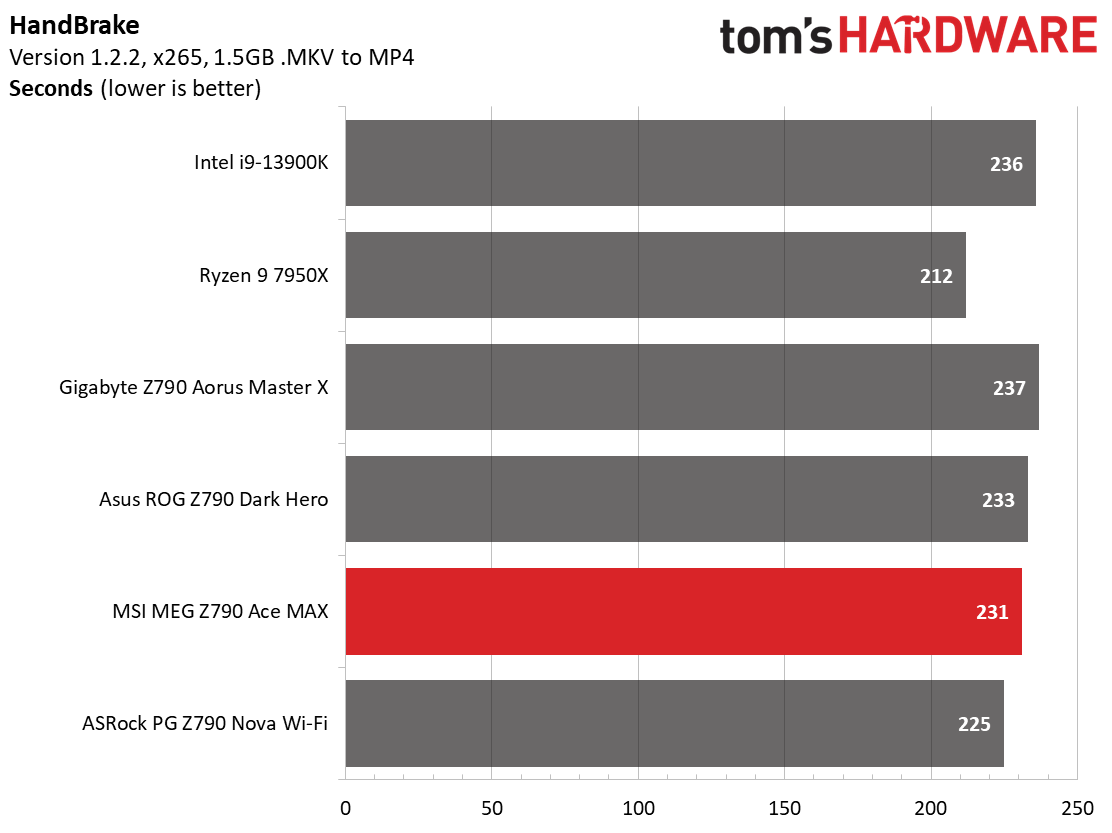
In our timed applications, the Ace MAX spread its wings and showed what a fully unlocked BIOS and large AIO can do. In the Handbrake tests, it was second only to the ASRock PG Z790 Nova Wi-Fi. LAME testing has it tied with two others as the fastest and also leads the pack in the Corona ray tracing benchmark. No matter what you throw at it, the Ace MAX can get the most out of whatever CPU you place in the socket.
3D Games and 3DMark
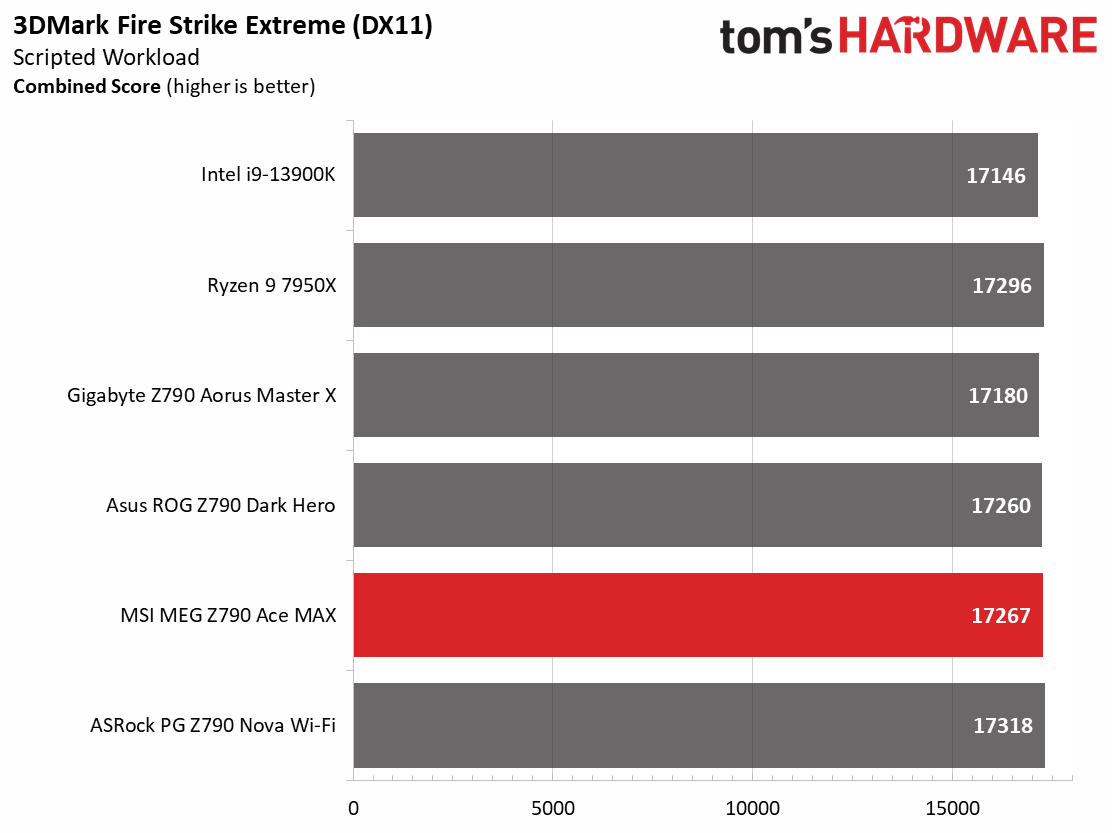
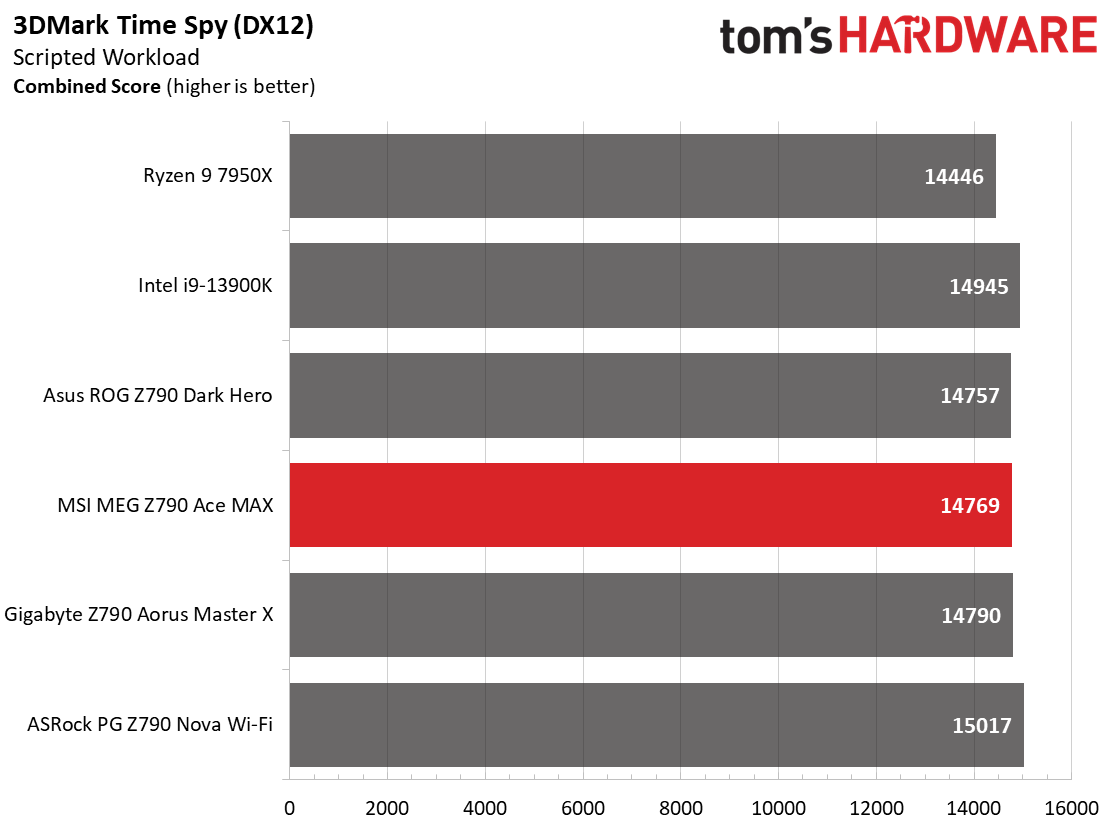
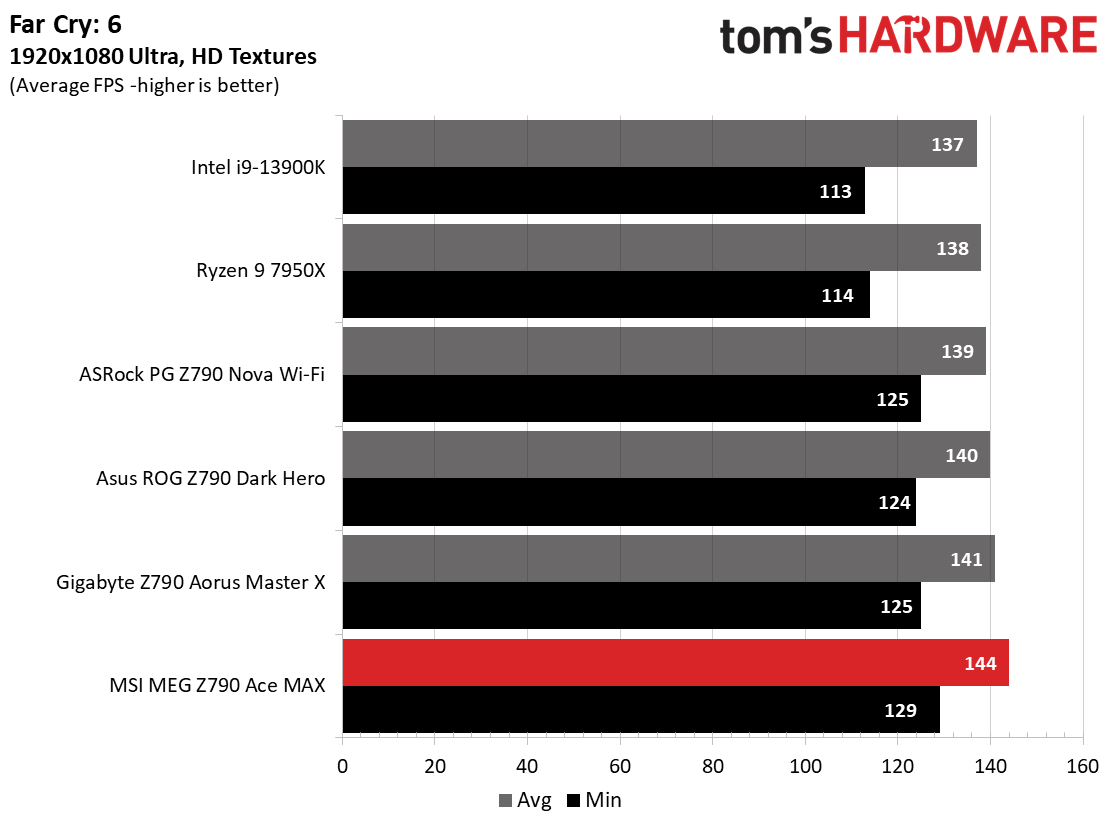
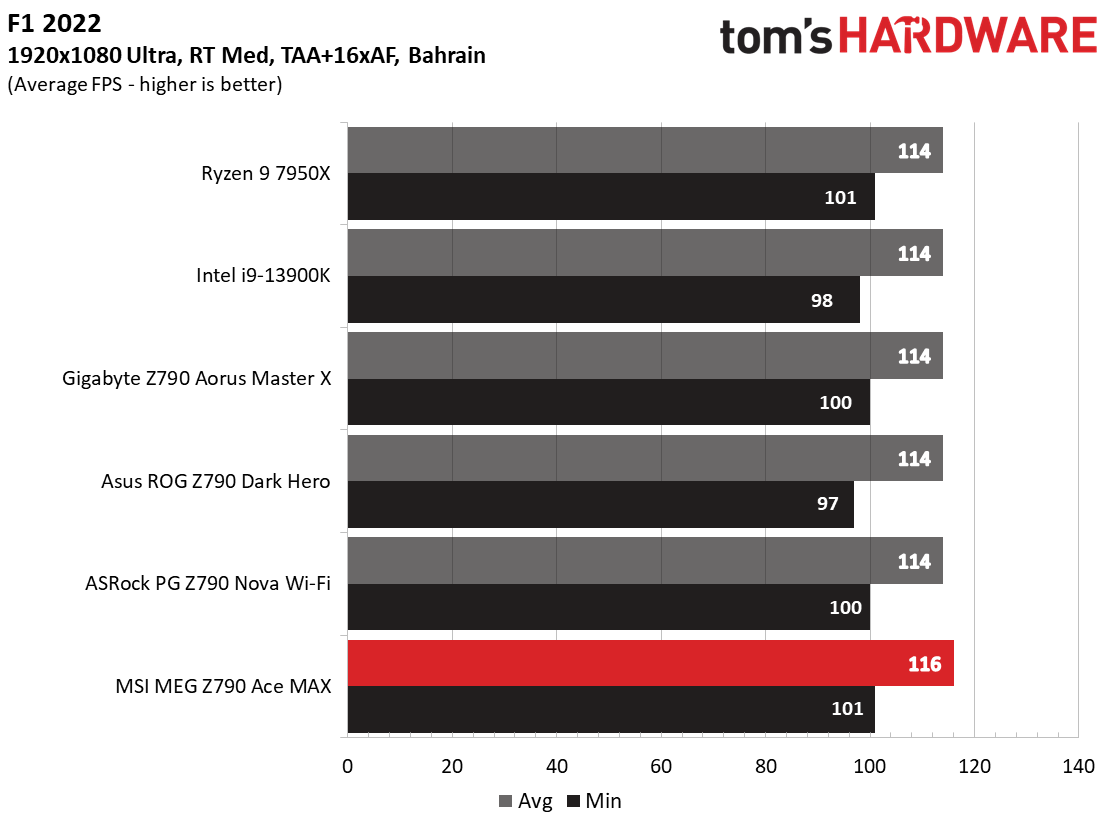
Starting with the launch of Zen 4, we shifted our test games from F1 21 to F1 22, while keeping Far Cry 6. We run the games at 1920x1080 resolution using the Ultra preset (details listed above). As the resolution goes up, the CPU tends to have less impact. The goal with these settings is to determine if there are differences in performance at the most commonly used (and CPU/system bound) resolution with settings most people use or strive for (Ultra). We expect the difference between boards in these tests to be minor, with most falling within the margin of error differences. We’ve also added a minimum FPS value, which can affect your gameplay and immersion experience.
In gaming, our Ace MAX stretches its legs again, leading the pack F1 22 and Far Cry 6 benchmarks by a couple of frames per second each. The synthetic benchmarks also showed above-average performance. There’s nothing we threw at this board it didn’t chew up and swallow easily.
Overclocking
Generation after generation, overclocking headroom has been shrinking with both Intel and AMD processors, with motherboard partners pushing the limits to set themselves apart from the plethora of options available to the consumer. With the overclocking headroom all but gone, we’ve left things at stock for cores but will push the Integrated Memory Controller (IMC) for faster RAM. Remember, for 14th-gen CPUs, the maximum stock spec for memory is DDR5-6000 versus DDR5-5600 for 13th-gen. We have a DDR5-7200 kit in-house to test the higher speeds.
Get Tom's Hardware's best news and in-depth reviews, straight to your inbox.
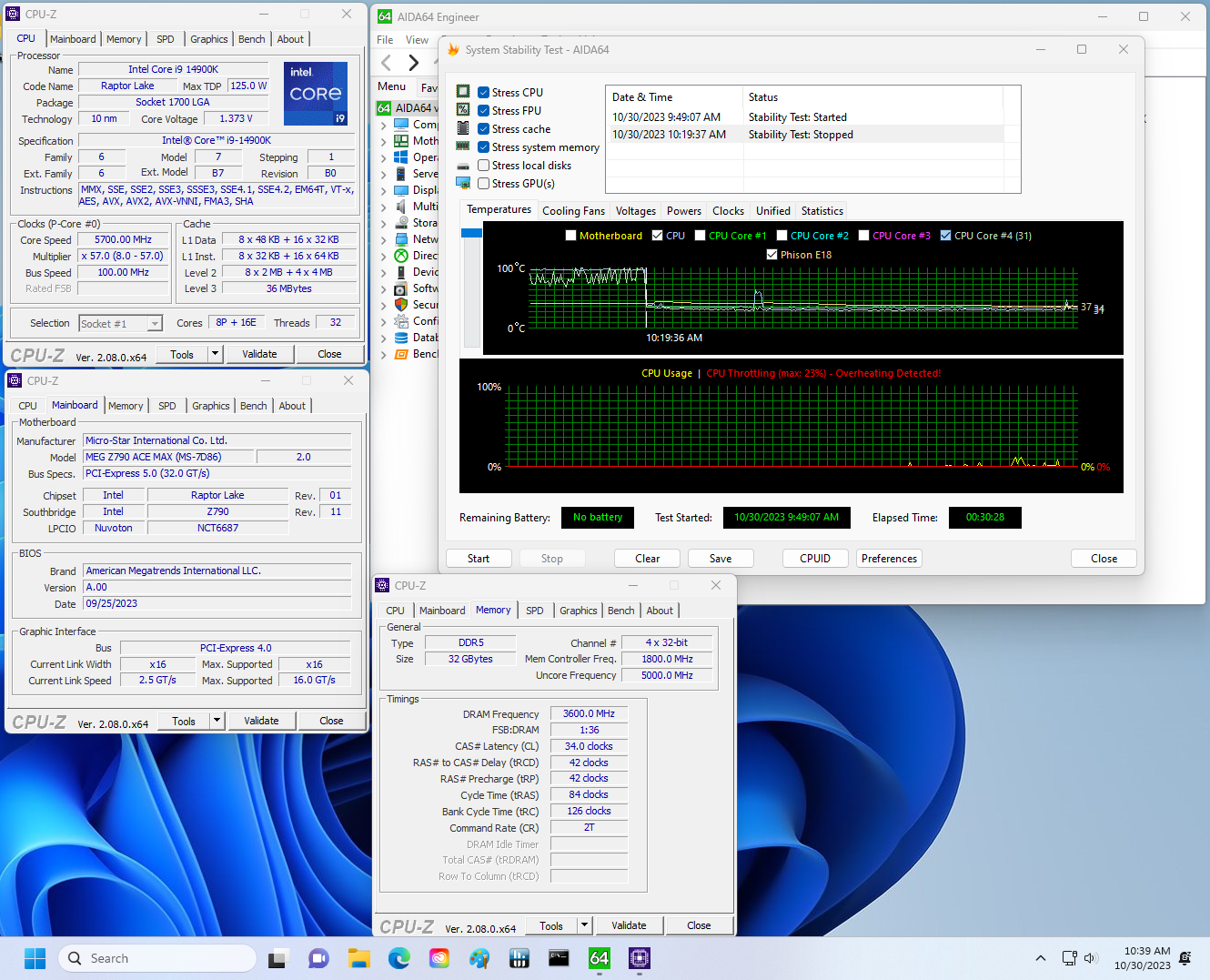
Both memory kits worked by simply enabling the XMP profile. With it rated up to DDR5-7800+(OC) and the 14000K’s maximum speed DDR5-6000 to start, you have to expect it to work. That and the sticks are on the memory QVL, giving you more assurance of a plug-and-play situation.
Power Consumption / VRM Temperatures

We used AIDA64’s System Stability Test with Stress CPU, FPU, Cache and Memory enabled for power testing, using the peak power consumption value. The wattage reading is from the wall via a Kill-A-Watt meter to capture the entire PC (minus the monitor). The only variable that changes is the motherboard; all other parts remain the same. Please note we moved to using only the stock power use/VRM temperature charts. Since the system uses every available degree Celsius, unless you’re using a sub-ambient cooling solution, you’ll use more power and generate more heat using default settings.
Idle power consumption on the Ace MAX is, unsurprisingly, the highest result so far. It idles the highest among the four tested boards at 79W while loading peaks at over 396W in our stress test, just behind the Aorus Master X (398W). If it’s efficiency you’re after, you should look elsewhere. However, the difference between all four is small, around 20W from most to least efficient.
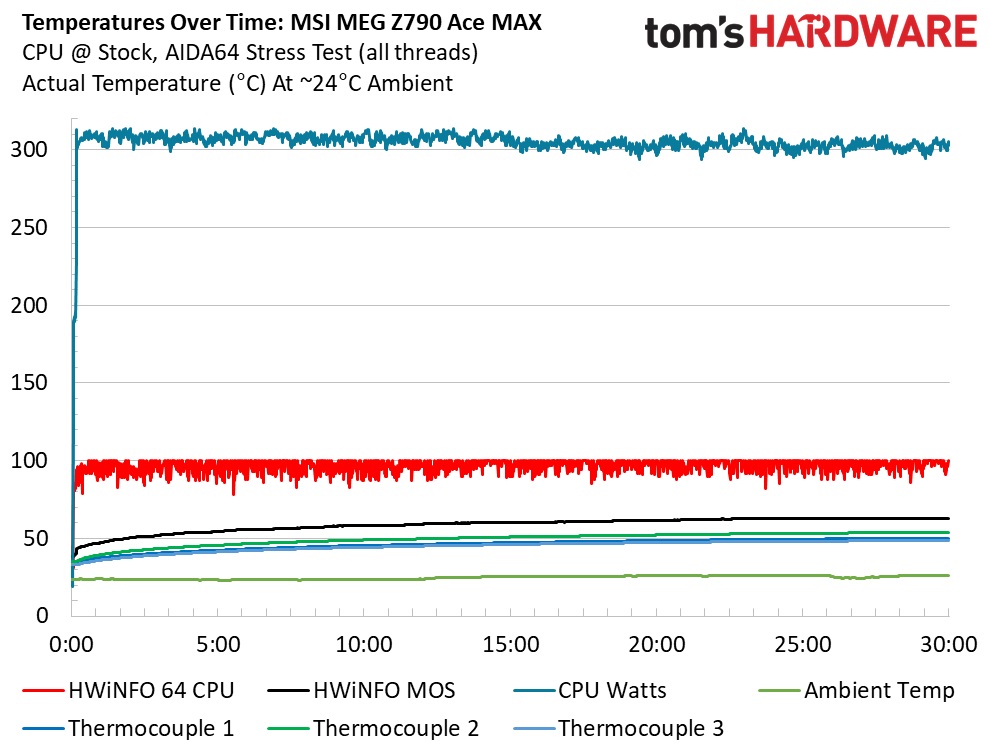

VRM temperatures on the Ace MAX were higher than the Aorus Master X and Dark Hero, but that makes sense compared to the wattage they allow the CPU to use. The oversized heatsinks do a great job, though at keeping the beefy SPS MOSFETs well within specification, peaking around 54 degrees Celsius on our probe. This board pushed our i9-14900K to just over 300W during stress testing, and the Stacked Fin Array design did the job.
Bottom Line
The MSI MEG Z790 Ace MAX is an iterative update over the original Ace, offering users native 14th-gen support, plus Wi-Fi 7. MSI made minor changes to the premium appearance, but the differences are hardly noticeable. Hardware-wise, it still comes with the same overkill power delivery and robust cooling, flagship-class audio, Thunderbolt 4 (40 Gbps) Type-C ports, five M.2 sockets (incl. one PCIe 5.0 x4) with screwless M.2 clips and dual 2.5GbE. In short, the Ace MAX is still loaded with high-end hardware and looks the part of a premium mid-range motherboard.
Priced at $699.99, the board isn’t cheap, costing as much as the Asus ROG Maximus Z790 Dark Hero that we recently reviewed. Between these two, the most significant difference is the SATA port count and appearance. Gigabyte’s Z790 Aorus Master X ($549.99) and ASRock’s Z790 Taichi ($479.99) cost a lot less, but in the case of the Master X, you don’t get flagship-class audio or Thunderbolt 4 ports. The elephant in the room for all of these refresh boards is the fact that you can have 14th-gen support with a simple BIOS flash and not pay the premium for Wi-Fi 7, which most can’t utilize anyway, as Wi-Fi 7 routers are only just hitting the market.
In the end, MSI updated the Ace with Wi-Fi 7, slight tweaks to its appearance, and native support for the 14th-gen Intel processors. After choosing the 360mm AIO cooling and unlocking the power limits, it performed well in the productivity tests and especially well in gaming, leading the pack in our two game tests. While we like what the board offers, its price is still on the high end when stacked up against the competition. If you’re in the market for a premium mid-range motherboard and need the latest and greatest the platform offers, the refreshed Z790 Ace MAX is a well-equipped choice, though there are less expensive options available that offer better value.
MORE: Best Motherboards
MORE: How To Choose A Motherboard
MORE: All Motherboard Content

Joe Shields is a staff writer at Tom’s Hardware. He reviews motherboards and PC components.
